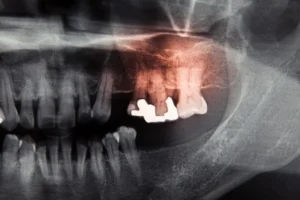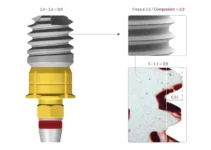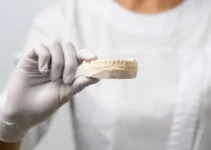Dental bridge problems can significantly impact your oral health, leading to issues that extend beyond simple discomfort. Common complications include poor fit, decay of the anchoring teeth, and gum disease around the dental bridge. These issues not only cause pain and sensitivity but can also affect the longevity of the bridge itself. Regular dental check-ups and maintaining good oral hygiene are essential to prevent and address these potential problems effectively. Understanding the indicators of bridge-related problems can help you seek timely intervention, ensuring your dental health remains intact.
Common Issues with Dental Bridges
Dental bridges are a popular solution for replacing missing teeth, offering both functional and aesthetic benefits. However, they are not without their challenges. Understanding the common issues associated with dental bridges can help patients maintain their oral health and prolong the lifespan of their prosthetic.
This section will explore the most frequent problems patients might encounter, such as bridge displacement, decay under bridges, and gum disease. By recognizing these issues early, patients can seek timely treatment and prevent more severe complications.
Regular check-ups with your dentist and proper oral hygiene are essential in minimizing these risks. Let us delve into each of these common issues to understand their causes, symptoms, and preventive measures.
Bridge Displacement
Bridge displacement is a situation where the dental bridge moves from its original position. This can occur for several reasons, including poor fit, wear and tear, or damage to the supporting teeth. When a bridge is not properly anchored, it can lead to discomfort and decrease the bridge’s effectiveness. Causes of bridge displacement can include:
- Insufficient bonding agents
- Improper fitting during placement
- Excessive force from chewing or teeth grinding
- Natural wear over time
Treatment often involves re-cementing the bridge or, in some cases, creating a new one if the original bridge is damaged beyond repair. Regular dental visits can help detect and rectify potential issues before they lead to displacement.
Patients are advised to avoid hard and sticky foods that could dislodge their bridges. Additionally, using a mouthguard during sports or night grinding can provide extra protection and prevent displacement.
Decay Under Bridges
Decay under bridges is another common issue that can compromise the integrity of both the bridge and the natural teeth supporting it. When food particles and plaque accumulate around and under the bridge, it creates an environment conducive to bacterial growth and tooth decay.
Preventive measures include:
- Maintaining excellent oral hygiene
- Flossing underneath the bridge
- Using interdental brushes to clean hard-to-reach areas
- Regular professional cleanings
Despite these measures, decay can sometimes still occur. The symptoms of decay under bridges can include sensitivity, pain, and noticeable changes in the bridge’s stability. Early detection through regular dental check-ups can prevent severe damage and the need for extensive dental work.
To address decay under bridges, a dentist may need to remove the bridge, treat the decayed area, and then refit or replace the bridge as necessary. Timely intervention is crucial to preserve the health of the supporting teeth.
Gum Disease
Gum disease is a serious issue that can significantly affect dental bridges. When plaque and tartar build up around the bridge, they can irritate and infect the gums, leading to gingivitis and, if left untreated, periodontitis.
The signs of gum disease include:
- Red, swollen, or bleeding gums
- Persistent bad breath
- Receding gum line
- Pain or tenderness around the bridge area
To prevent gum disease, patients should commit to a rigorous oral hygiene routine that includes brushing twice a day, flossing daily, and using an antiseptic mouthwash. Regular dental visits for professional cleanings and examinations are also indispensable.
If gum disease is detected, treatment may involve deep cleaning procedures like scaling and root planing, and in severe cases, surgery may be required to restore gum health. Managing gum disease promptly not only benefits the gums but also helps in maintaining the longevity of the dental bridge.
For more comprehensive insights into dental health, explore our other articles. These resources can provide in-depth knowledge and tips on maintaining a healthy and vibrant smile.
Symptoms Indicating Dental Bridge Problems
Dental bridges are a common solution for replacing missing teeth, but they can sometimes come with complications. Being aware of the symptoms indicating dental bridge problems can help in addressing issues promptly and maintaining oral health. Proper care and regular dental check-ups are essential to ensure the longevity and functionality of your dental bridge. In this section, we will discuss some common symptoms that may indicate problems with your dental bridge, such as persistent pain, difficulty in chewing, and swollen gums. Recognizing these signs early can lead to better management and treatment of any underlying issues.
Persistent Pain
Persistent pain around a dental bridge can be a sign of several underlying issues. This discomfort might result from an improper fit of the bridge, leading to uneven pressure distribution on the surrounding teeth or gums. It’s essential to pay attention to pain that doesn’t subside and consult your dentist promptly.
Another possible cause of persistent pain is the decay of the abutment teeth that support the bridge. If these teeth become compromised, they can trigger continuous discomfort. This decay can occur if there is a poor seal between the bridge and the tooth, allowing bacteria to penetrate and cause damage.
In some cases, pain may also indicate an underlying infection in the gums or bone supporting the bridge. Such infections require immediate attention to prevent further complications like bone loss or the spread of bacteria to other areas of the mouth or body.
Difficulty in Chewing
A properly functioning dental bridge should enable you to chew and speak normally. However, if you experience difficulty in chewing, it could indicate a problem with the bridge’s alignment or fit. An ill-fitting bridge may cause an imbalanced bite, leading to discomfort and inefficient chewing.
Difficulty in chewing can also result from the loosening of the bridge. Over time, dental bridges may lose their stability due to wear and tear or changes in the supporting structures of your mouth. A loose bridge can shift positions, making it hard to chew effectively and comfortably.
Swollen Gums
Swollen gums around a dental bridge can be a significant indication of an issue. This swelling might suggest that the bridge is causing irritation to the surrounding gum tissue, possibly due to a poor fit or improper hygiene practices. It is crucial to ensure that both the bridge and the adjacent teeth are kept clean to prevent such irritation.
Another possible reason for swollen gums could be an underlying gum infection or gum disease. If plaque and bacteria accumulate around the bridge, they can lead to gum inflammation and infection. Regular dental hygiene and professional cleanings are vital to prevent such problems.
In some instances, swollen gums may also be a reaction to materials used in the bridge. Some patients may be sensitive or allergic to certain metals or compounds, leading to inflammation and discomfort. Discussing material options with your dentist can help mitigate such risks.
Understanding the symptoms indicating dental bridge problems is crucial for maintaining your oral health. If you experience any of the symptoms mentioned above, consult your dentist at the earliest. Regular check-ups and proper oral hygiene can significantly contribute to the longevity and success of your dental bridge. For more information on dental health and solutions, explore our other articles.
Preventive Measures and Treatment for Dental Bridge Issues
Dental bridges are a common solution for missing teeth, but they require diligent care to avoid complications such as decay, gum disease, or bridge failure. Preventive measures and prompt treatments are essential for maintaining the longevity and functionality of dental bridges. This article will elaborate on several critical strategies to ensure the health of your dental bridge.
Maintaining a dental bridge involves a combination of routine check-ups, proper oral hygiene, and immediate professional intervention when issues arise. By adhering to these preventive measures, you can significantly reduce the risk of complications and extend the life of your dental bridge.
Regular Dental Check-ups
One of the most effective ways to prevent dental bridge issues is by scheduling regular dental check-ups. Dentists can identify potential problems early and provide the necessary treatment before the issue escalates. Regular examinations allow for the timely detection of possible complications such as:
- Decay forming under the bridge
- Gum disease
- Wear and tear on the bridge or adjacent teeth
It’s recommended to visit your dentist every six months for a comprehensive examination and professional cleaning. These regular visits ensure that your dental bridge remains in optimal condition and functions correctly.
Proper Oral Hygiene
Proper oral hygiene is paramount in preventing dental bridge issues. A dental bridge can be more susceptible to plaque buildup, which can lead to decay and gum disease. Important oral hygiene practices include:
- Brushing twice daily with fluoride toothpaste
- Flossing at least once a day, using specialized floss or interdental brushes to clean around the bridge
- Using an antiseptic mouthwash to reduce bacterial load
Proper cleaning of the bridge and surrounding teeth ensures that all food particles and plaque are removed, minimizing the risk of complications. Consider using tools specifically designed for cleaning around bridges, such as interdental brushes and water flossers, to maintain optimal oral hygiene.
Immediate Professional Consultation
If you experience any issues with your dental bridge, such as discomfort, loosening, or signs of infection, it is crucial to seek immediate professional consultation. Prompt attention can prevent minor issues from developing into more serious problems that might require extensive treatment or bridge replacement.
Common signs that indicate the need for professional consultation include:
- Persistent bad breath or bad taste in the mouth
- Gum inflammation or bleeding around the bridge
- Pain or sensitivity in the teeth supporting the bridge
- Visible damage or movement in the bridge
Timely intervention not only alleviates discomfort but also prevents further damage, ensuring the longevity of your dental bridge. A proactive approach to any dental issue is vital for maintaining overall oral health.
In conclusion, taking preventive measures for dental bridge care can significantly improve its longevity and your overall oral health. Regular check-ups, proper hygiene, and immediate professional intervention are key strategies for maintaining a healthy dental bridge. For more information on dental health, consider reading our other articles on similar topics!
Common Issues with Dental Bridges
Dental bridges are popular solutions for missing teeth, but like any dental treatment, they come with their own set of challenges. Here are some of the common problems people experience with dental bridges and how they can impact oral health.
What are the typical problems associated with dental bridges?
Some typical issues with dental bridges include discomfort or sensitivity shortly after placement, difficulty in cleaning under the bridge leading to decay or gum disease, and potential damage to the anchoring teeth. Over time, a bridge can also become loose or the adjacent teeth may suffer from increased wear. Addressing these problems promptly with your dentist is crucial to maintain overall oral health.

My name is Salman Kapa, a 73-year-old expert in bone regeneration and dental implantology. With decades of experience in the field, I am dedicated to advancing our understanding of oral health and hygiene. Through my research and writing, I aim to contribute to the development of innovative solutions in dental care.




